Discover 35 hidden attractions, cool sights, and unusual things to do in Norfolk (United States). Don't miss out on these must-see attractions: Chrysler Museum of Art, Norfolk Botanical Garden, and Virginia Zoo. Also, be sure to include USS Wisconsin in your itinerary.
Below, you can find the list of the most amazing places you should visit in Norfolk (Virginia).
Table of Contents
Chrysler Museum of Art
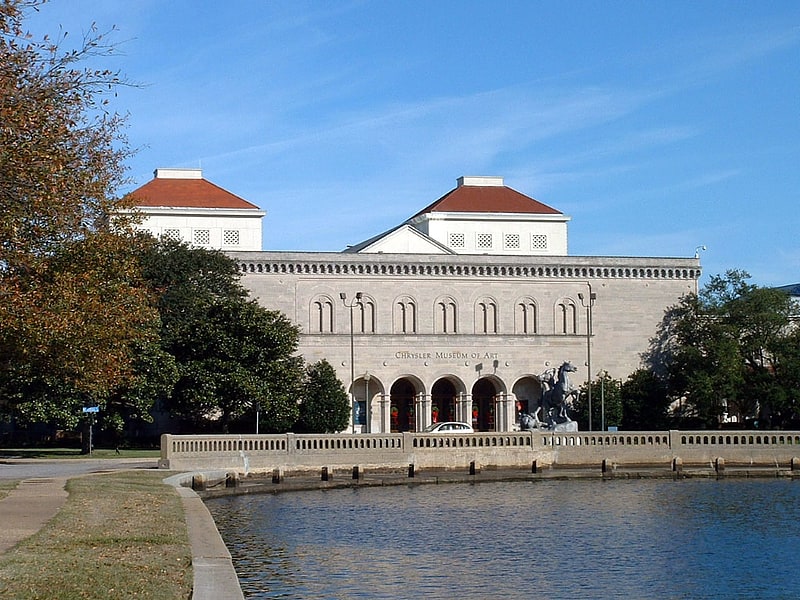
Fine works from Renaissance to Rothko. The Chrysler Museum of Art is an art museum on the border between downtown and the Ghent district of Norfolk, Virginia. The museum was founded in 1933 as the Norfolk Museum of Arts and Sciences. In 1971, automotive heir, Walter P. Chrysler Jr. donated most of his extensive collection to the museum. This single gift significantly expanded the museum's collection, making it one of the major art museums in the Southeastern United States. From 1958 to 1971, the Chrysler Museum of Art was a smaller museum consisting solely of Chrysler's personal collection and housed in the historic Center Methodist Church in Provincetown, Massachusetts. Today's museum sits on a small body of water known as The Hague.[1]
Address: 1 Memorial Pl, 23510 Norfolk
Norfolk Botanical Garden
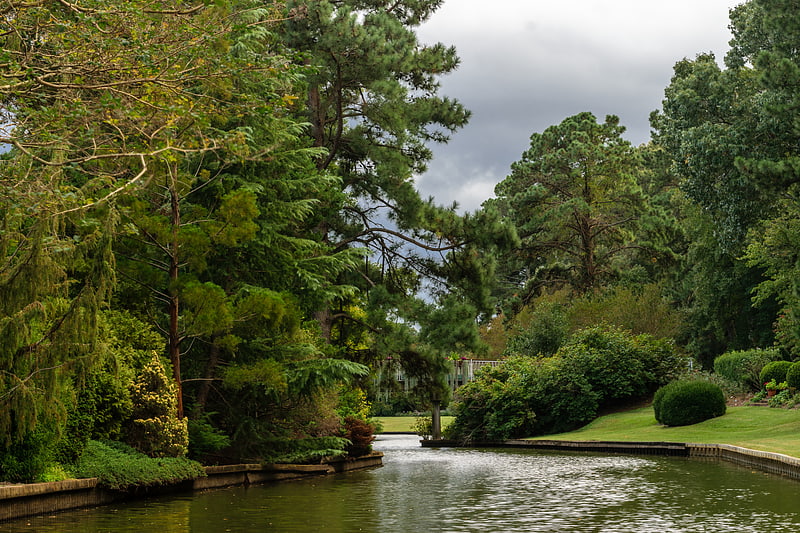
Botanical garden in Norfolk, Virginia. The Norfolk Botanical Garden is a botanical garden with arboretum located at 6700 Azalea Garden Road, Norfolk, Virginia.[2]
Virginia Zoo
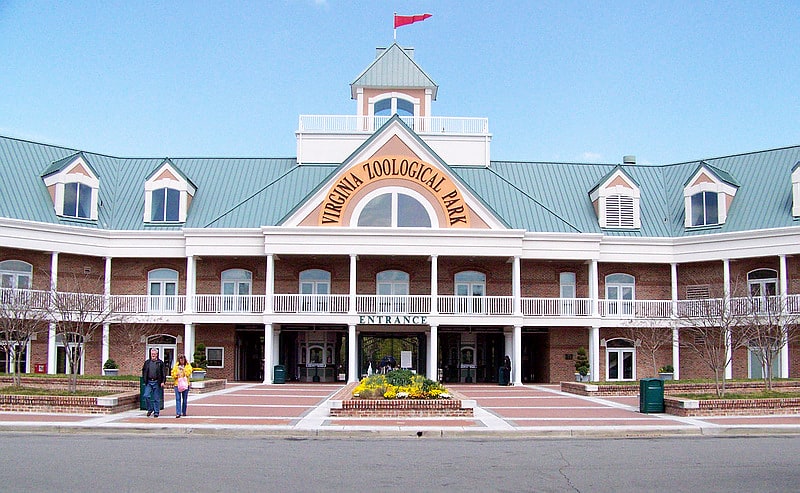
Zoo in Norfolk, Virginia. The Virginia Zoological Park is a 53-acre zoo located adjacent to Lafayette Park in Norfolk, Virginia, United States. The zoo opened in 1900, and was accredited by the Association of Zoos and Aquariums in 1987.[3]
Address: 3500 Granby St, 23504-1329 Norfolk
USS Wisconsin
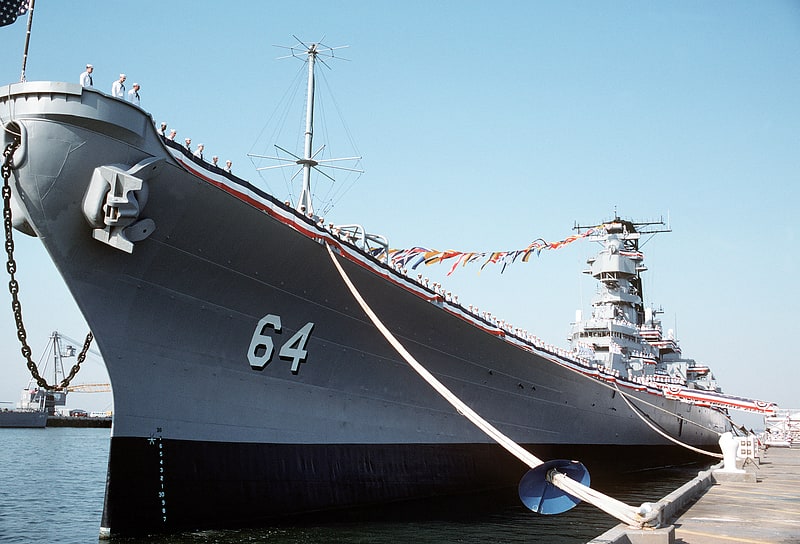
Large, revered battleship offering tours. USS Wisconsin is an Iowa-class battleship, the second ship of the United States Navy to be named in honor of the U.S. state of Wisconsin. She was built at the Philadelphia Naval Shipyard in Philadelphia, Pennsylvania, and launched on 7 December 1943, sponsored Margaret Goodland, wife of Governor Walter Goodland of Wisconsin.
During her career, Wisconsin served in the Pacific theater of World War II, where she shelled Japanese fortifications and screened United States aircraft carriers as they conducted air raids against enemy positions. During the Korean War, Wisconsin shelled North Korean targets in support of United Nations and South Korean ground operations, after which she was decommissioned. She was reactivated on 1 August 1986; after a modernization program, she participated in Operation Desert Storm in January and February 1991.
Wisconsin was last decommissioned in September 1991 after a total of 14 years of active service in the fleet, and having earned a total of six battle stars for service in World War II and Korea, as well as a Navy Unit Commendation for service during the January/February 1991 Gulf War. She currently functions as a museum ship operated by Nauticus, The National Maritime Center in Norfolk, Virginia. Wisconsin was stricken from the Naval Vessel Register (NVR) 17 March 2006, and was donated for permanent use as a museum ship. On 15 April 2010, the City of Norfolk officially took over ownership of the ship.[4]
Address: 1 Waterside Dr, 23510 Norfolk
Nauticus
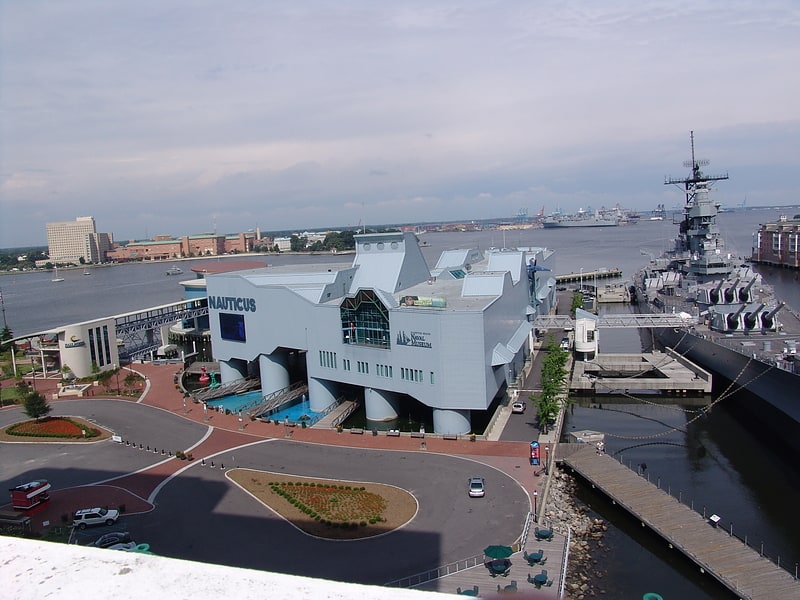
Museum in Norfolk, Virginia. Nauticus is a maritime-themed science center and museum located on the downtown waterfront in Norfolk, Virginia, also known as the National Maritime Center.[5]
Address: 1 Waterside Dr, 23510 Norfolk
MacArthur Memorial
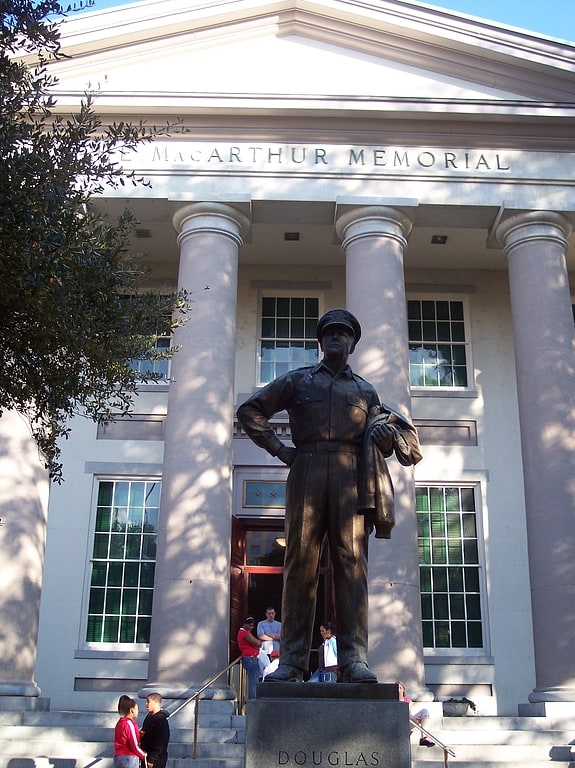
Museum. The MacArthur Memorial is a memorial, museum, and research center about the life of General Douglas MacArthur. It consists of three buildings on MacArthur Square in Norfolk, Virginia.
- Memorial - located in the former Norfolk City Hall building, the memorial houses the tomb of General MacArthur and his wife in the rotunda, and the museum that spans nine galleries about his life and career. Exhibits include photos, uniforms, flags, medals, weapons, personal artifacts, paintings, and sculpture. The Memorial also pays tribute to the men and women who served with General MacArthur in World War I, World War II, and the Korean War.
- Visitor Center - includes the MacArthur Memorial Theater showing a 27-minute movie about MacArthur's life, a special exhibit gallery, the general's personal staff car, and other vehicles from World War II, a gift shop, rest rooms, and offices.
- Jean MacArthur Research Center - houses the general's personal archives, memorabilia, and collections, including his trophies, medals, prizes, decorations, uniforms, flags, swords, battle souvenirs, personal papers, along with both official and other documents. The building also includes educational facilities and offices. It is open to researchers by appointment. Admission is free.
Address: 198 Bank St, 23510 Norfolk
Hampton Roads Naval Museum

Museum in Norfolk, Virginia. The Hampton Roads Naval Museum is one of ten Navy museums that are operated by the Naval History & Heritage Command. It celebrates the long history of the U.S. Navy in the Hampton Roads region of Virginia and is co-located with Nauticus in downtown Norfolk, Virginia.
In December 2008, the Hampton Roads Naval Museum was accredited by the American Alliance of Museums, the gold standard for museum accreditation.[7]
Address: 1 Waterside Dr, 23510-1607 Norfolk
Norfolk Scope
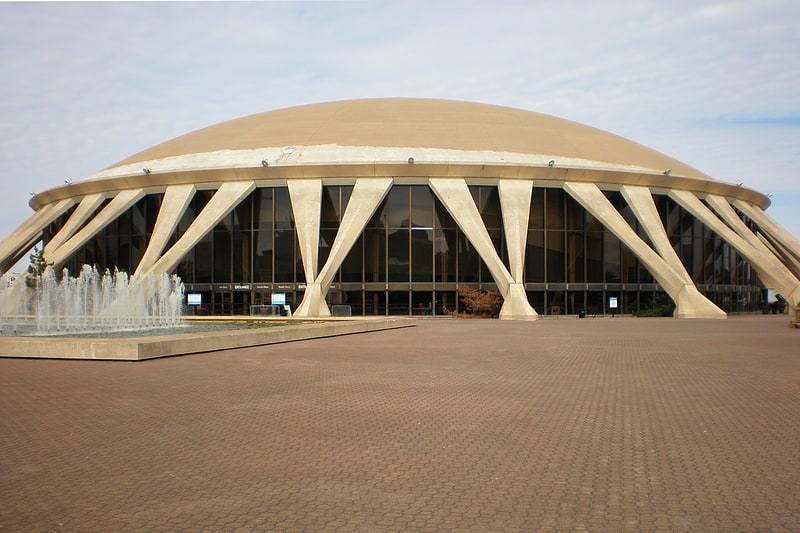
Arena in Norfolk, Virginia. Norfolk Scope is a multi-function complex in Norfolk, Virginia, comprising an 11,000-person arena, a 2,500-person theater known as Chrysler Hall, a 10,000-square-foot exhibition hall and a 600-car parking garage.
The arena was designed by Italian architect/engineer Pier Luigi Nervi in conjunction with the (now defunct) local firm Williams and Tazewell, which designed the entire complex. Nervi's design for the arena's reinforced concrete dome derived from the PalaLottomatica and the much smaller Palazzetto dello Sport, which were built in the 1950s for the 1960 Summer Olympics in Rome.
Construction on Scope began in June 1968 at the northern perimeter of Norfolk's downtown and was completed in 1971 at a cost of $35 million. Federal funds covered $23 million of the cost, and when it opened formally on November 12, 1971, the structure was the second-largest public complex in Virginia, behind only the Pentagon.
Featuring the world's largest reinforced thinshell concrete dome (though eclipsed by the Seattle Kingdome from 1976 to 2000), Scope won the Virginia Society of the American Institute of Architects Test of Time award in 2003. Wes Lewis, director of Old Dominion University's civil engineering technology program, called it "a beautiful marrying of art and engineering." Noted architectural critic James Howard Kunstler described the design as looking like "yesterday's tomorrow."
The name "Scope", a contraction of kaleidoscope, emphasizes the venue's re-configurability. The facility logo (right), which features a multi-colored, abstracted kaleidoscope image, was designed by Raymond Loewy's firm Loewy/Snaith of New York.[8]
Address: 201 E Brambleton Ave, 23510-2411 Norfolk
Chartway Arena
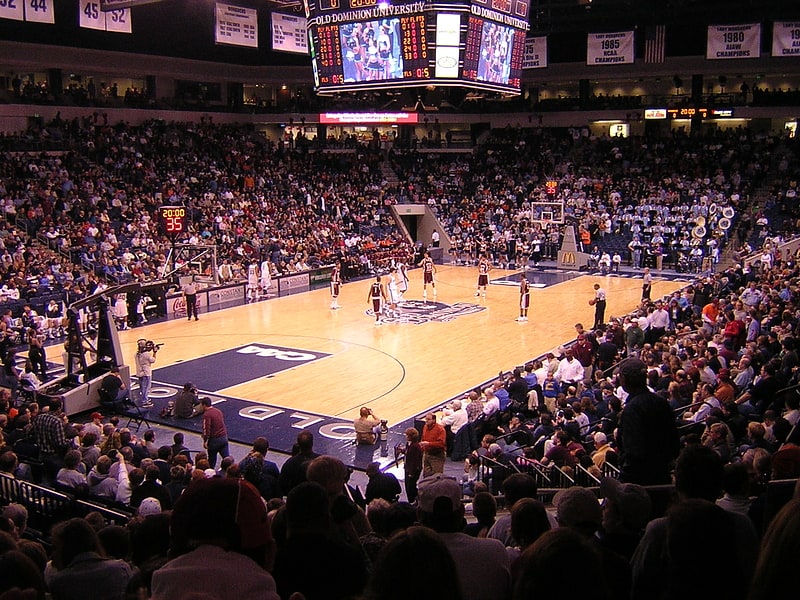
Arena in Norfolk, Virginia. Chartway Arena at the Ted Constant Convocation Center is a 219,330-square-foot, multi-purpose arena in Norfolk, Virginia, United States, on the campus of Old Dominion University. It is operated by Spectra Venue Management. Chartway Arena is part of the University Village project, a 75-acre development that will also feature a shopping center, restaurants, theaters, offices, research labs and residences with connections to the campus. "The Ted" has 7,319 seats, 862 upper club/priority seats, 16 luxury suites, and a scoreboard. The arena currently seats 8,639 for basketball games and 9,520 for concerts. In addition to being used for home basketball games and high-profile wrestling matches for ODU, the Constant Center hosts family-oriented events as well as concerts and lectures.
"The Ted" was designed by Southfield, Michigan architecture firm Rossetti.
On March 17 and 19, 2012, Chartway Arena played host to the first and second round of the 2012 NCAA Women's Division I Basketball Tournament.
In 2015, Chartway Arena received upgraded video systems throughout the stadium including a digital scoreboard from Daktronics.
In 2021, a newly constructed, full-service Starbucks location opened at Chartway Arena. This new location is located on the 43rd Street side of the venue near Hampton Blvd.[9]
Address: 4320 Hampton Blvd, 23508-2406 Norfolk
Elizabeth River
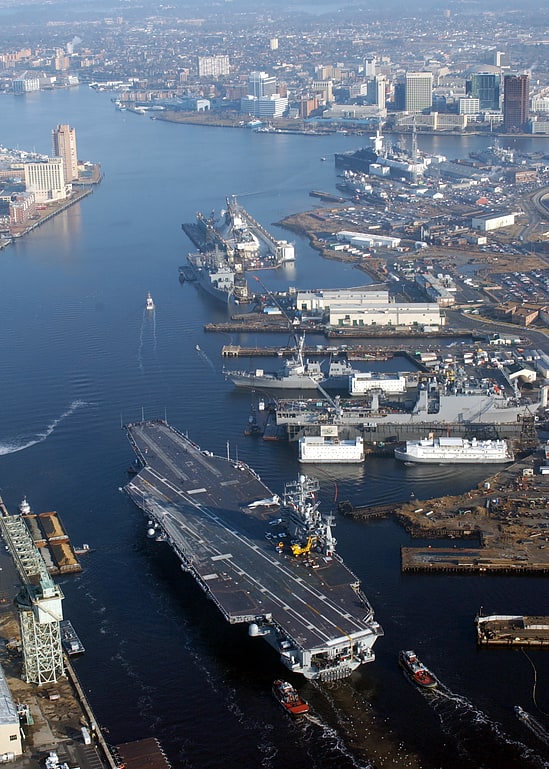
River in Virginia. The Elizabeth River is a 6-mile-long tidal estuary forming an arm of Hampton Roads harbor at the southern end of Chesapeake Bay in southeast Virginia in the United States. It is located along the southern side of the mouth of the James River, between the cities of Portsmouth, Norfolk, and Chesapeake. Forming the core of the Hampton Roads harbor, it is heavily supported by its tributaries which depend upon it.
Through its Southern Branch and the Albemarle and Chesapeake Canal, the Elizabeth River also is a gateway to points to the south for the Atlantic Intracoastal Waterway, an inland path from the ocean providing a more sheltered navigable waterway to Florida for commercial and recreational boating.[10]
Downtown Norfolk
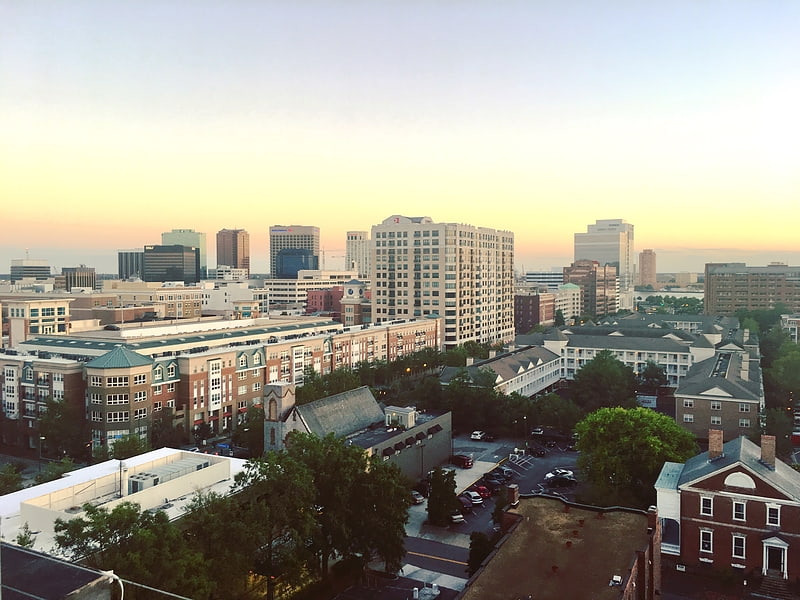
Suburb in Norfolk, Virginia. Downtown Norfolk serves as the traditional center of commerce, government, and culture in the Hampton Roads region. Norfolk, Virginia's downtown waterfront shipping and port activities historically played host to numerous and often noxious port and shipping-related uses. With the advent of containerized shipping in the mid-19th century, the shipping uses located on Norfolk's downtown waterfront became obsolete as larger and more modern port facilities opened elsewhere in the region. The vacant piers and cargo warehouses eventually became a blight on downtown and Norfolk's fortunes as a whole. But in the second half of the century, Norfolk had a vibrant retail community in its suburbs; companies like Smith & Welton, High's, Colonial Stores, Goldman's Shoes, Lerner Shops, Hofheimer's, Giant Open Air, Dollar Tree and K & K Toys were regional leaders in their respective fields. Norfolk was also the birthplace of Econo-Travel, now Econo Lodge, one of the nation's first discount motel chains.
Similarly, the advent of newer suburban shopping destinations spelled demise for the fortunes of downtown's Granby Street commercial corridor, located just a few blocks inland from the waterfront. Granby Street traditionally played the role as the premiere shopping and gathering spot in the Hampton Roads region. Retailers ranged from low-priced variety stores such as Woolworth's and Grants to more upscale department stores such as Smith & Welton (1898-1988), Rices Nachmans (1918-1985) and Ames and Brownley (1898-1973), and fine hotels and theaters lined its sidewalks. However, new suburban shopping developments promised more convenience and comfort. The opening of Pembroke Mall in Virginia Beach, the region's first climate controlled shopping mall, and JANAF Shopping Center in Norfolk's Military Circle area, helped foment Granby Street's spiral into commercial obsolescence. With amenities such as ample free parking at the door of one's favorite store, and in the case of Pembroke Mall, climate control, the businesses of downtown's Granby Street found it harder and harder to compete.
Beginning in the 1920s, Norfolk's city leaders began what would be a long push to revive the fortunes of its urban core.[11]
St. Paul's Episcopal Church
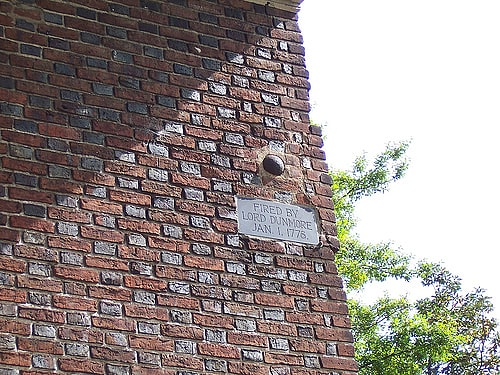
Building in Norfolk, Virginia. Saint Paul's Episcopal Church is a historic church in Norfolk, Virginia, United States. The Nave of the current church was built in 1739 and is the sole colonial-era building which survived the various wars that Norfolk has witnessed. The church has played host to several different denominations throughout its history. Originally a Church of England parish, the building was home to a Baptist parish in the early-19th century and was finally converted back into an Episcopal church.[12]
Address: 201 Saint Pauls Blvd, Norfolk
Hunter House Victorian Museum
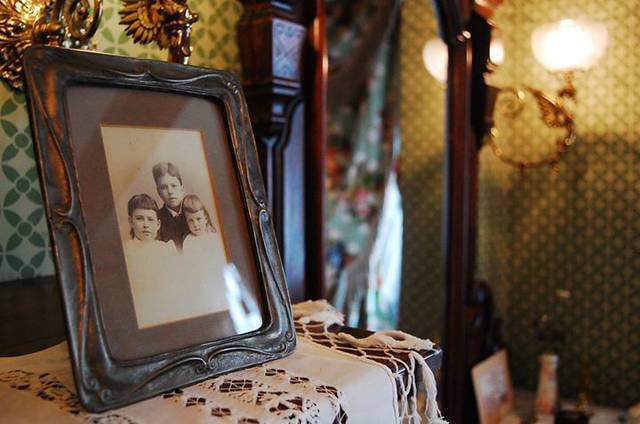
Museum in Norfolk, Virginia. The Hunter House Victorian Museum in Norfolk, Virginia, United States is a house museum.
The house was built in 1894 for the merchant and banker James Wilson Hunter, together with his wife Lizzie Ayer Barnes Hunter and their three children. It was designed and built by the Boston architect W.P. Wentworth in the Richardsonian Romanesque style.
The museum opened in 1988. It includes Victorian furnishings and decorative arts belonging to Hunter's family.[13]
Address: 240 W Freemason St, 23510-1221 Norfolk
Christ and St. Luke's Church
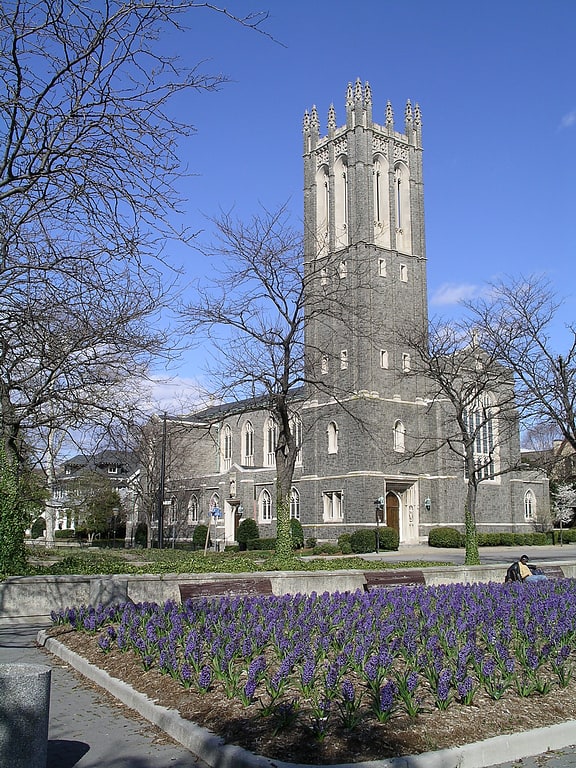
Church in Norfolk, Virginia. Christ and St. Luke's Church is a historic Episcopal church located at Norfolk, Virginia. It was built in 1909–1910, and is a long, narrow building of rough-faced random ashlar in the English Perpendicular Gothic Revival style. It features a tall, four-stage corner tower crowned with battlements and pinnacles.
It was listed on the National Register of Historic Places in 1979. It is located in the North Ghent Historic District.[14]
Address: 560 W Olney Rd, 23507-2135 Norfolk
West Freemason Street Area Historic District

The West Freemason Street Area Historic District is a national historic district located at Norfolk, Virginia. It encompasses 48 contributing buildings in a primarily residential section on the western edge of the center city of Norfolk. It developed between the late-18th and early-20th centuries and includes notable examples of the Federal, Greek Revival, and Late Victorian styles. Notable buildings include Kenmure House Glisson House, Whittle House, McCullough Row, and the Camp-Hubard house. Located in the district is the separately listed Allmand-Archer House.
It was listed on the National Register of Historic Places in 1972.[15]
Berkley Bridge
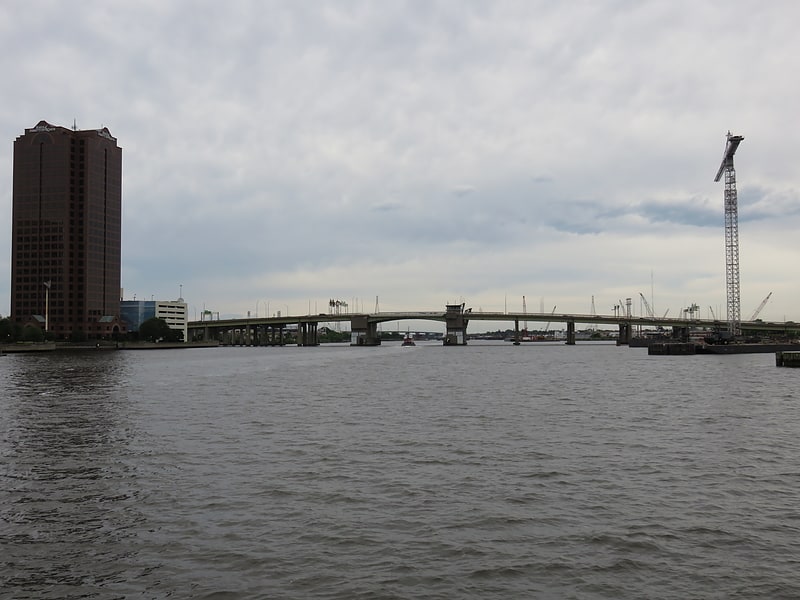
Bascule bridge in Norfolk, Virginia. The Interstate 264 Berkley Bridge is a double-leaf bascule bridge that crosses the Eastern Branch of the Elizabeth River in Norfolk, Virginia, United States. It carries Interstate 264, U.S. Route 460 Alternate, and State Route 337 across the river, connecting the Berkley neighborhood south of the river with downtown Norfolk to the north. The toll-free facility is one of only a small number of movable bridges on the Interstate Highway System, and is the first of two in the Hampton Roads region, predating the High Rise Bridge. It is named for the former Town of Berkley that is now a part of the City of Norfolk.[16]
Harrison Opera House
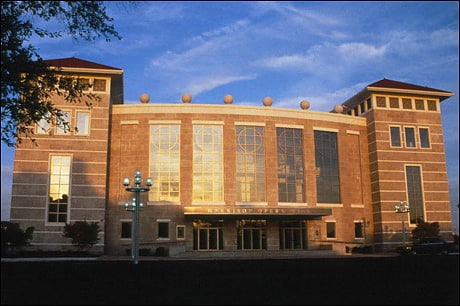
Opera house in Norfolk, Virginia. The Edythe C. and Stanley L. Harrison Opera House, also known as the Harrison Opera House, is the official home of the Virginia Opera in the Neon District of Downtown Norfolk on the border of the Ghent Square neighborhood.
Built as a public works auditorium, this theatre served as a venue for World War II USO shows. The theater was known previously as Norfolk Center Theater., The venue was renovated by architecture firm, GUND Partnership, reopening in 1993 as a dedicated opera facility with a 1,632 seating capacity. The building originally contained both the USO/Center Theater along with the adjoining former Norfolk Municipal Auditorium, which now serves as storage and administrative space for the Virginia Opera.
The opera house is named after Stanley and Edythe Harrison, a former member of the Virginia House of Delegates and founding president of the Virginia Opera.[17]
Address: Norfolk, 160 Virginia Beach Blvd.
Town Point Park
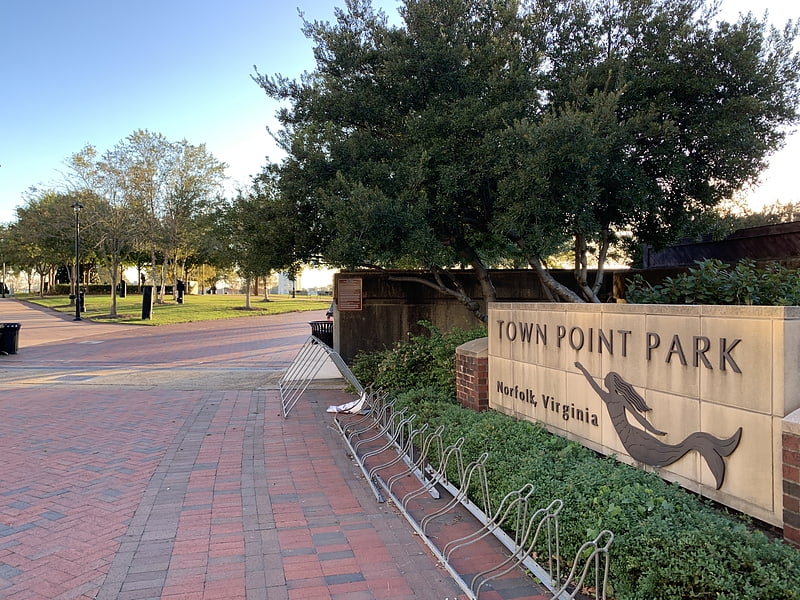
Park in Norfolk, Virginia. Town Point Park is a 7-acre waterfront city park on the Elizabeth River in Norfolk, Virginia, USA. The park hosts major outdoor concerts, award-winning festivals and special events each year to include Norfolk Harborfest, Bayou Boogaloo, and 4th of July Celebrations. Norfolk Festevents programs Town Point Park on behalf of the City of Norfolk. Located in the park are The Homecoming and the Armed Forces Memorial.
The Armed Forces Memorial is located at the southwest corner of the park, on the river. The Memorial plaza features 20 letters home from US service people from the American Revolution through the Gulf War, all of whom died after writing their letters. The letters are engraved on bronze plates and appear as if strewn by the wind on the Memorial.
Town Point Park is located in downtown Norfolk and is adjacent to Nauticus and the museum ship USS Wisconsin (BB-64).
In October 2008, almost all of the park was bulldozed to prepare for a total redesign of the park. As of July 2009 it has been open to the public for daily use.[18]
Address: 201 Waterside Dr, 23510 Norfolk
Epworth United Methodist Church
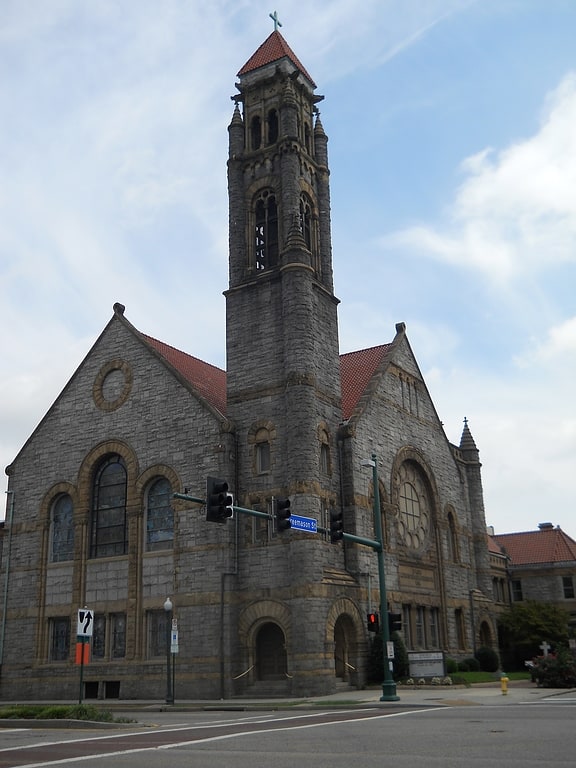
Church in Norfolk, Virginia. Epworth United Methodist Church, originally Epworth Methodist Episcopal Church, is a historic Methodist church located at Norfolk, Virginia. It was designed by two noted Virginia architects James Edwin Ruthven Carpenter, Jr. and John Kevan Peebles, and built between 1894 and 1896. It is a rusticated granite with yellow sandstone trim church building in the Richardsonian Romanesque style. The original building is divided into three sections: the cruciform sanctuary, the social hall and classrooms, and the pastor's study. The building features 22 beautiful stained glass windows, most notably the Ascension flanked by two Tiffany windows. It has a bell tower topped by a pyramidal red tile roof. The church was remodeled to its present appearance in 1921.
It was listed on the National Register of Historic Places in 1997.[19]
Address: 124 W Freemason St, 23510 Norfolk
The NorVa
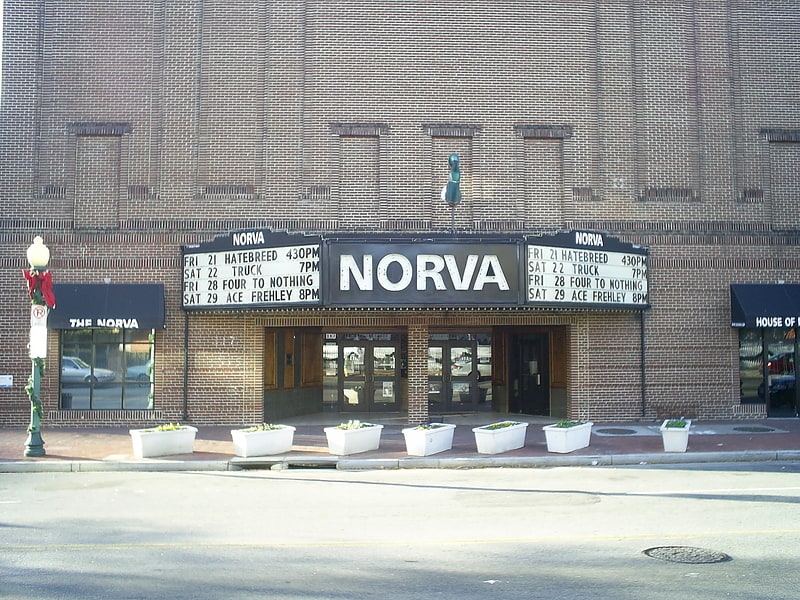
Theater in Norfolk, Virginia. The NorVa is a performing venue located in Norfolk, Virginia, the name being a syllabic abbreviation of the city and state of its location.
The NorVa was the brainchild of local music venue entrepreneurs Bill Reid and Rick Mersel, who have also developed the NTelos Wireless Pavilion and have ties to the development of Farm Bureau Live at Virginia Beach. In 2014, the NorVa was acquired by Anschutz Entertainment Group.
The original NorVa Theater opened in 1922 as a 2000-seat motion picture and live entertainment (vaudeville) theater. It continued as a movie theater into the 1970s. The building served as home to the Downtown Athletic Club from 1980 until 1998 when it was renovated for its current use.[20]
Address: 317 Monticello Ave, 23510-2407 Norfolk
Chrysler Hall
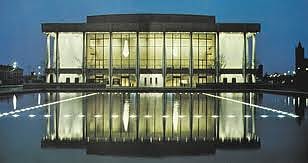
Theater in Norfolk, Virginia. Chrysler Hall is the premier performing arts venue in Norfolk, Virginia, located in the downtown section of the city. Built in 1972 and located next to the Norfolk Scope arena, the venue is home to the Virginia Symphony Orchestra, the Virginia Ballet and hosts Broadway plays while serving as Norfolk's primary theater and concert venue. The venue also contains a studio theater in the lower levels of the complex that serves as the current home of the Generic Theater. The City of Norfolk owns and operates the venue.
It was originally designed by Pier Luigi Nervi and local architects.[21]
Address: Norfolk, 215 Saint Pauls Boulevard
Wells Theatre

Theatre in Norfolk, Virginia. The Wells Theatre is a performing arts venue located in downtown Norfolk, Virginia. It has housed the Virginia Stage Company since 1979. The Wells Theatre is owned and operated by the City of Norfolk and is part of The Seven Venues.[22]
Address: 108 E Tazewell St, 23510-1802 Norfolk
Freemason Street Baptist Church
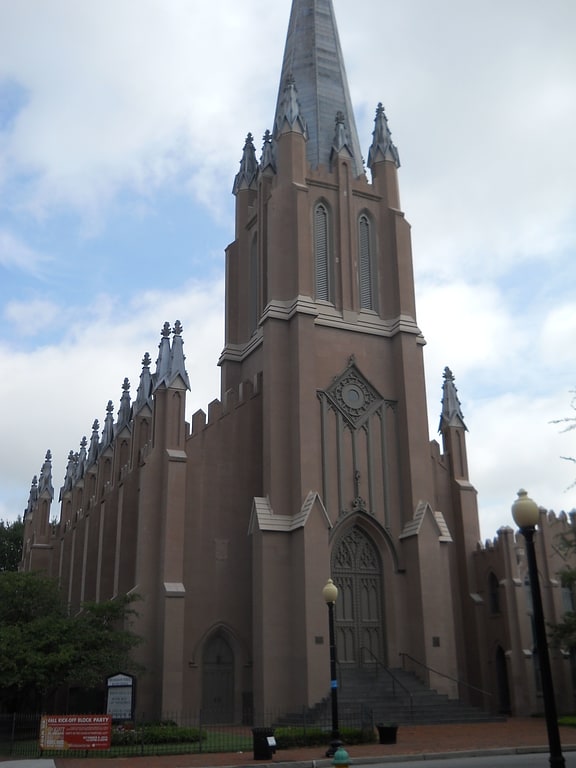
Church in Norfolk, Virginia. Freemason Street Baptist Church is a historic Baptist church located at Norfolk, Virginia. It was designed by architect Thomas Ustick Walter and dedicated in 1850. It is a one-story, Perpendicular Gothic style stuccoed brick church. The front facade features a projecting belfry and two stage tower topped by an octagonal spire.
It was listed on the National Register of Historic Places in 1971.[23]
Address: 400 E Freemason St, 23510 Norfolk
Attucks Theatre
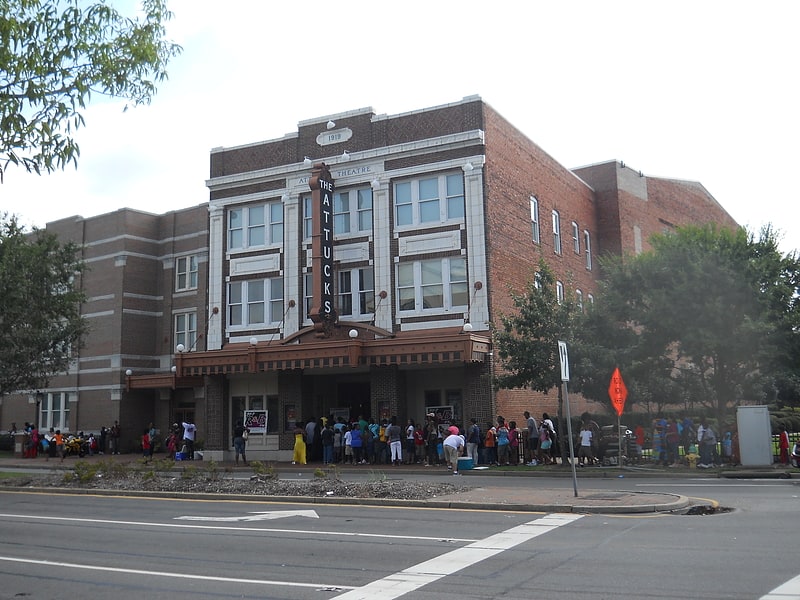
Theatre in Norfolk, Virginia. The Attucks Theatre, located in Norfolk, Virginia, United States, was financed, designed and constructed by African American entrepreneurs in 1919. The theatre was designed by Harvey Johnson, an African-American architect. The theatre was named in honor of Crispus Attucks, an African American who was the first patriot to lose his life in the Revolutionary War. When it was first opened, Attucks Theatre was known as the "Apollo Theatre of the South." It has hosted performers ranging from Cab Calloway to Redd Foxx. The theater hosted numerous famous entertainers through the 1920s, 1930s, 1940s and early 1950s, including Norfolk's Gary U.S. Bonds and Portsmouth's Ruth Brown.
The theater was added to the National Register of Historic Places on September 16, 1982. After a three-year restoration, the theatre reopened in 2004 as a partnership between the City of Norfolk's Department of Cultural Facilities and the Crispus Attucks Cultural Center.
The theatre is located at the intersection of Church Street and Virginia Beach Boulevard, near Norfolk's entertainment and cultural attractions, including Harbor Park, Harrison Opera House, Norfolk Scope, Wells Theatre and Waterside.
Today, the Norfolk theatre is formally known as The Crispus Attucks Cultural Center. After extensive renovations, the theatre re-opened in October 2004. The theatre is currently owned and operated by SevenVenues, a department of the City of Norfolk.[24]
Address: Norfolk, 1010 Church Street
First Calvary Baptist Church
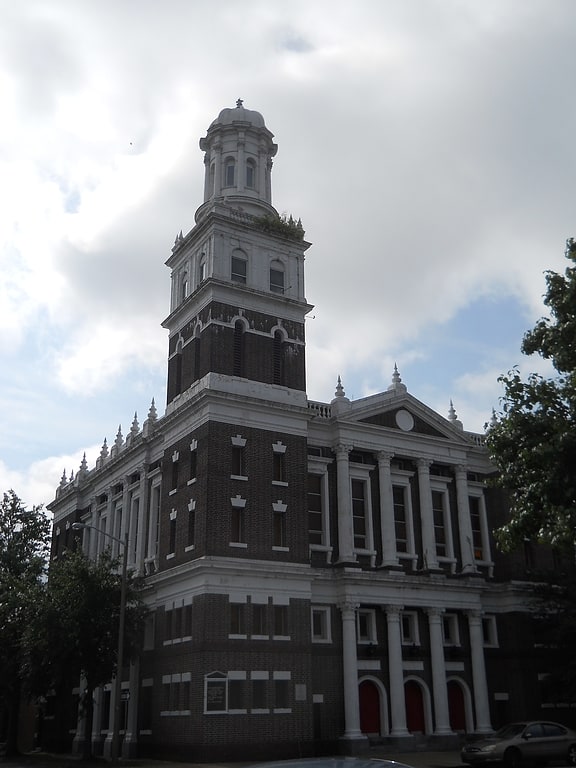
Baptist church in Norfolk, Virginia. First Calvary Baptist Church is a historic African-American Baptist church located in Norfolk, Virginia. It was built in 1915 and 1916 and is a four-story, 11 bay, brick church building in the Second Renaissance Revival style. The building features decorative terra cotta and a stained-glass dome. It has a two-tier, engaged entrance portico with fluted columns, Corinthian order capitals, and terra cotta entablatures. The building also has a three-stage bell tower.
It was listed on the National Register of Historic Places in 1987.[25]
Address: 813 Henry St, Norfolk
West Point Cemetery

Cemetery in Norfolk, Virginia. West Point Cemetery, also known as Potter's Field and Calvary Cemetery, is a historic cemetery and national historic district located at Norfolk, Virginia. It encompasses three contributing sites, one contributing structure, and one contributing object in an African American graveyard in downtown Norfolk. The cemetery was established in 1873, and includes a grouping of headstones marking the remains of 58 black soldiers and sailors who served in the American Civil War, and a monument honoring these veterans stands over their graves. Other notable elements include the Potter's Field, O’Rourke Mausoleum, and the West Point Cemetery entry sign.
It was listed on the National Register of Historic Places in 2007. It is contiguous with Elmwood Cemetery, listed in 2013.[26]
Norfolk City Hall
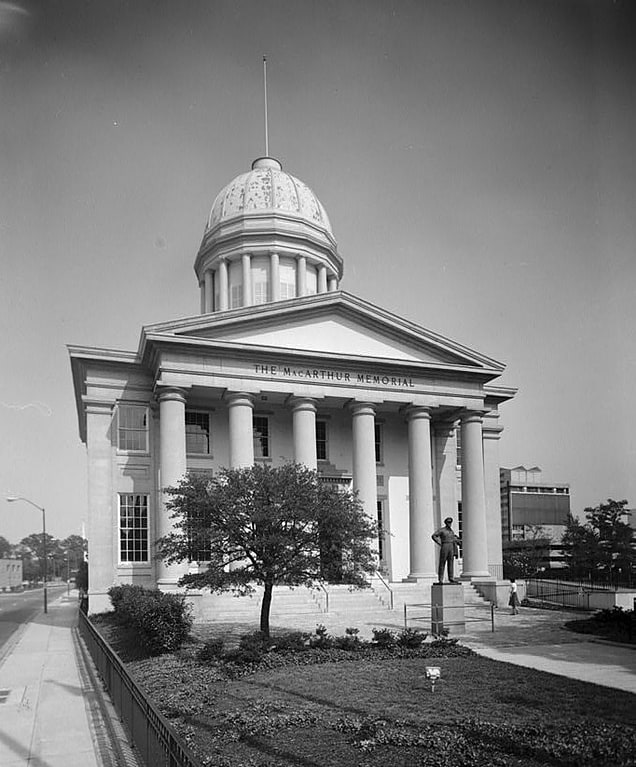
City hall. Norfolk City Hall, also known as the MacArthur Memorial, is a historic city hall located at Norfolk, Virginia. It was built in 1847, and is a two-story, stuccoed and granite faced, temple-form building measuring 80 feet by 60 feet. It features a front portico supported by six massive Tuscan order columns, and a gable roof topped by a cupola. The building housed city offices until 1918, and courtrooms until 1960.
In 1961, the entire building interior was gutted to house the museum and tomb of General Douglas MacArthur and his wife. The MacArthur Memorial also includes a visitor center building and a research center.
Norfolk City Hall was listed on the National Register of Historic Places in 1972.[27]
Willoughby-Baylor House
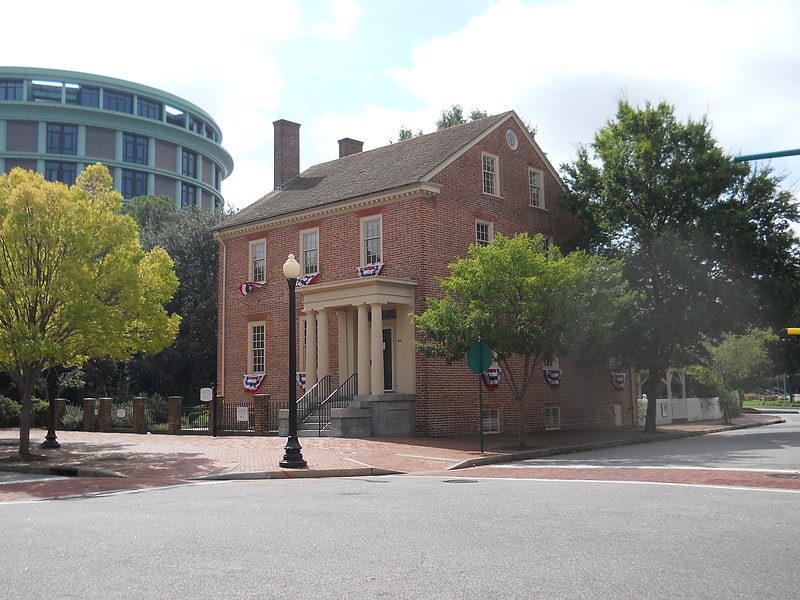
Building. The Willoughby–Baylor House is a historic home located at Norfolk, Virginia. It was built about 1794, and is a two-story, three-bay, brick detached townhouse with a gable roof. It features a Greek Revival style doorway and porch supported on two pairs of Greek Doric order columns. These features were added in the mid-1820s. It was built by William Willoughby, a local merchant and building contractor. The building is open as a historic house museum operated by the Chrysler Museum of Art.
It was listed on the National Register of Historic Places in 1971.[28]
Commodore Levy Chapel
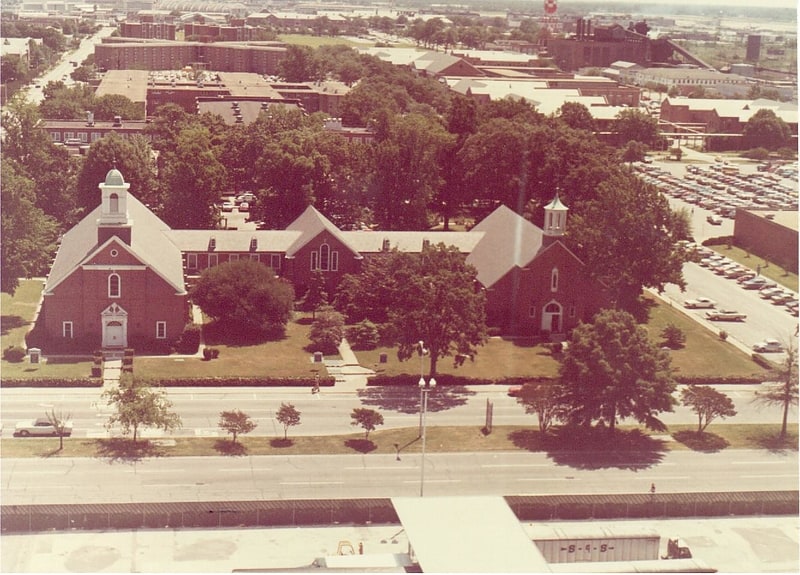
The Commodore Levy Chapel, established in 1942 and renamed in 1959 in honor of Uriah P. Levy, is the United States Navy's oldest Jewish chapel, located at Naval Station Norfolk, in Norfolk, Virginia. It is part of a chapel complex in the Naval Station's Frazier Hall that also includes Catholic, Protestant, and Muslim Chapels.
Commodore Levy Chapel is one of two Navy chapels named for the same person, the other being the Commodore Uriah P. Levy Center and Chapel, at the United States Naval Academy in Annapolis, Maryland.[29]
Walter E. Hoffman United States Courthouse
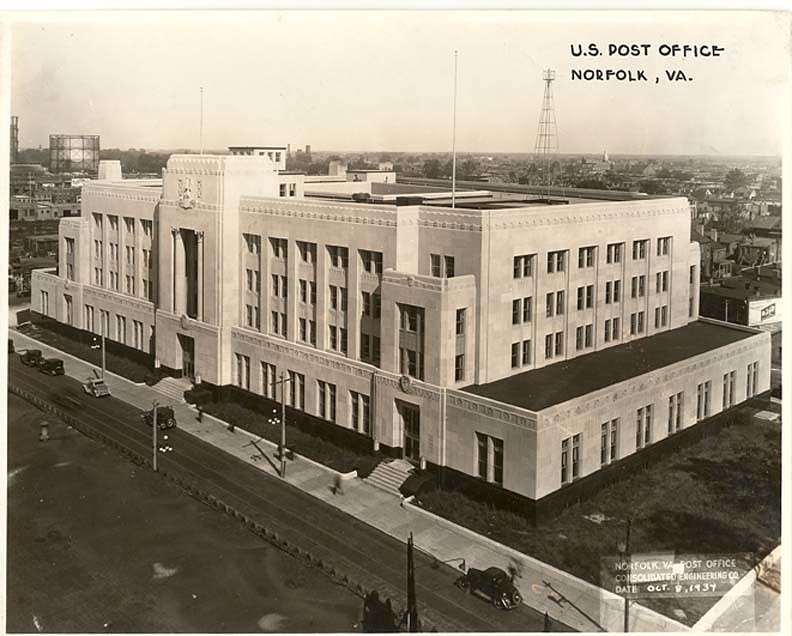
Courthouse in Norfolk, Virginia. The Walter E. Hoffman United States Courthouse, formerly known as the U.S. Post Office and Courthouse, is a courthouse of the United States District Court for the Eastern District of Virginia in Norfolk, Virginia. Built in 1932, it was listed on the National Register of Historic Places in 1984, reflecting Art Deco architecture. Historically it served as a courthouse and additionally as a post office.[30]
Address: 600 Granby St, Norfolk
Stockley Gardens Arts Festival

Park, Relax in park
Address: Stockley Gardens Park (In Ghent), Norfolk
Elmwood Cemetery
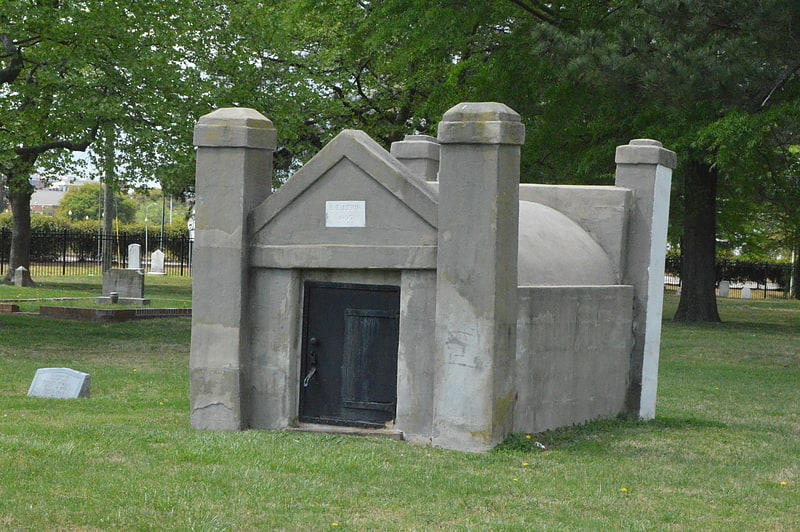
Cemetery in Norfolk, Virginia. Elmwood Cemetery is a historic municipal cemetery located at Norfolk, Virginia. It was established in 1853, and is filled with monuments and mausoleums that embody the pathos and symbolism of the Christian view of death as a temporary sleep. A notable monument is the Recording Angel by William Couper at the Couper Family plot. The Core Mausoleum designed by Harold Van Buren Magonigle, with sculptures by Edward Field Sanford, Jr. is another notable resource.
It was listed on the National Register of Historic Places in 2013. It is contiguous with West Point Cemetery, listed in 2007.[31]
Address: 239 E Princess Anne Rd, 23504 Norfolk
First Baptist Church
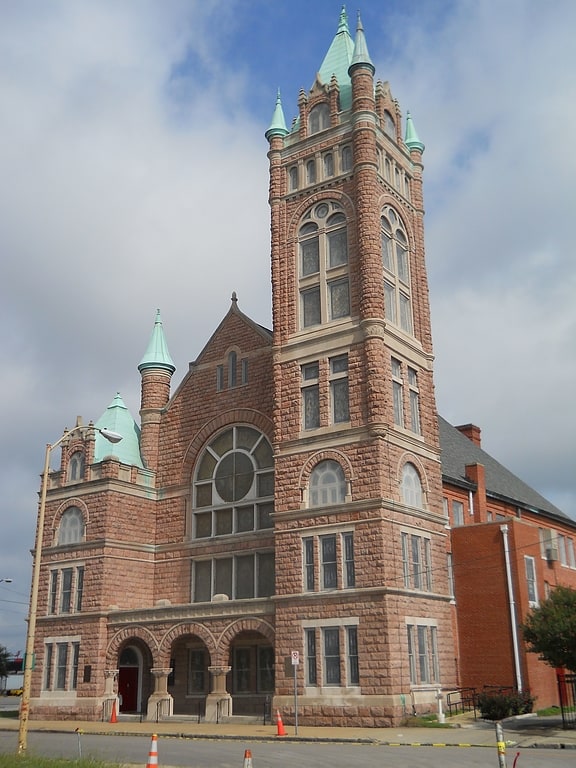
Baptist church in Norfolk, Virginia. First Baptist Church is a historic African-American Baptist church located in Norfolk, Virginia. It was designed by architect R. H. Hunt and dedicated in 1906. It is a Romanesque Revival-style church with a richly ornamented facade of rough-faced, pink granite ashlar and limestone trim. It features a tall, eight-level corner tower with a multiplicity of window types and a shorter flanking tower at the opposite corner. Construction began in 1904.
It was listed on the National Register of Historic Places in 1983.[32]
Address: 418 Bute Street, 23510 Norfolk
North Ghent
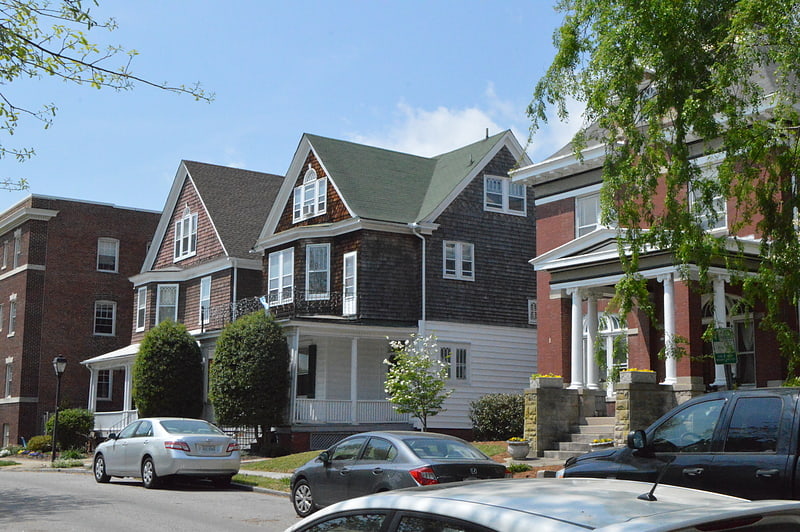
The North Ghent Historic District is a national historic district located at Norfolk, Virginia. It encompasses 322 contributing buildings in a primarily residential section of Norfolk. It developed primarily between 1897 and 1912 as a northward extension of Ghent. The neighborhood includes notable examples of a variety of architectural styles including the Greek Revival and Queen Anne styles. Notable non-residential buildings include the First Presbyterian Church, Ohef Sholom Temple, and Ghent Methodist Church. Located in the district is the separately listed Christ and St. Luke's Church.
It was listed on the National Register of Historic Places in 2001.[33]
St. John's African Methodist Episcopal Church
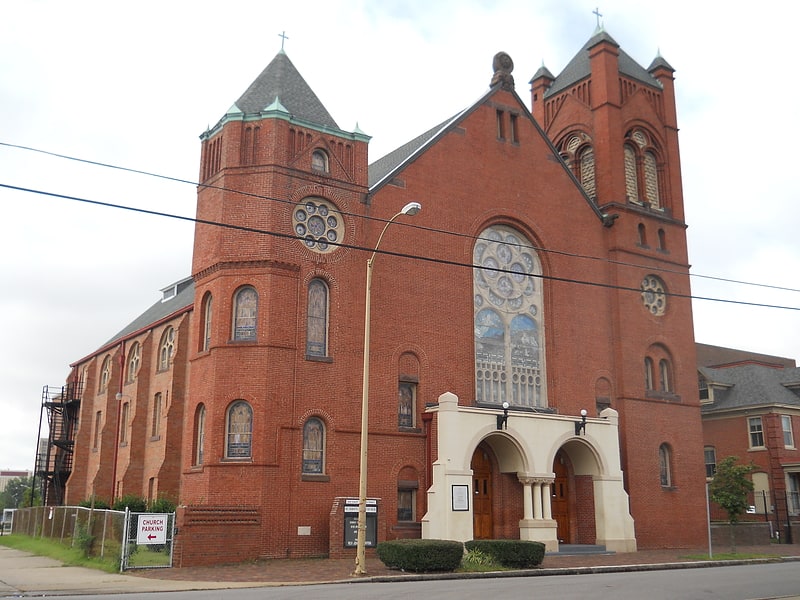
Methodist church in Norfolk, Virginia. St. John's AME Church is a historic congregation of the African Methodist Episcopal Church in Norfolk, Virginia, United States. Founded in 1840, it was the first African American Episcopal Church in Virginia. It moved to its present location on East Bute Street in what is now Downtown Norfolk in 1848.
The historic church building was built in 1888, a red brick structure in the Richardsonian Romanesque style with a large, heavy and steeply pitched slate roof and two flanking towers. The building features a centered stone entrance portico, containing the main entrance to the church. The portico is built of light grey freestone in a style reminiscent of the ambulatory of a Romanesque abbey and consists of two large openings headed by semi-circular arches. The building houses a large sanctuary and horseshoe-shaped balcony with a seating capacity of 1,500 people. Also on the property is the contributing parsonage; a 2½-story, four-bay, brick dwelling in a simplified Second French Empire style. It was listed on the National Register of Historic Places in 1986.[34]